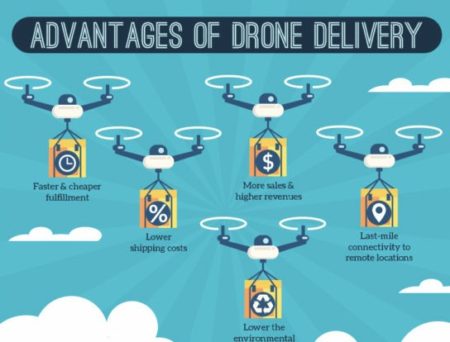May 19, 2019 – Simon Pleass, a reader of this blog site and Managing Director at 2Flow, has passed along an infographic created to examine the current state of drones describing how the technology is likely to massively disrupt what is referred to as the last-mile in transportation. Here are his thoughts on why delivery drones are taking off.
As drone technology becomes more and more sophisticated, many businesses and organisations are exploring how to take advantage of this technology to optimize logistics operations. So, can we expect to see drones flying through the urban skies with packages for delivery slung underneath in the near future or is this just pie in the sky? The infographic below from 2Flow provides an in-depth exploration of the current state and trends around delivery drones both as a technology and service.
The Rise of Delivery Drones
It’s evident that an increasing number of businesses are waking up to the enormous potential of drone delivery. In the US alone, drone delivery has surged from a $40 million industry in 2012 to $1 billion in 2017. In fact, a McKinsey report projects that in future up to 80% of all items will be delivered by autonomous vehicles and drones. NASA has produced similar estimates with predictions of 7 million drones in the sky by 2020 with 2.6 million of them commercially operated.
The Argument For Delivery Drones
Advocates for cargo drones argue that deployment of this technology will lead to major improvements in delivery logistics, resulting in more efficient and cost-effective operations. For customers, this would mean faster delivery times and lower shipping costs. Some operators envisage drones being used alongside traditional road haulage deployed to cover the last mile for each delivery, and thereby slashing travel time and costs.
The Argument Against Delivery Drones
A number of key issues, however, remain to be addressed before we see drone delivery technology becoming commonplace. Most critical is the strict government regulation that restricts accessible air space for drones in most countries around the world. What’s more, there are also noise and pollution considerations that will need to be resolved.
Enjoy the infographic that follows. It should answer many of your questions about this nascent technology, and how it may play a growing role in service delivery and the transportation sector.










